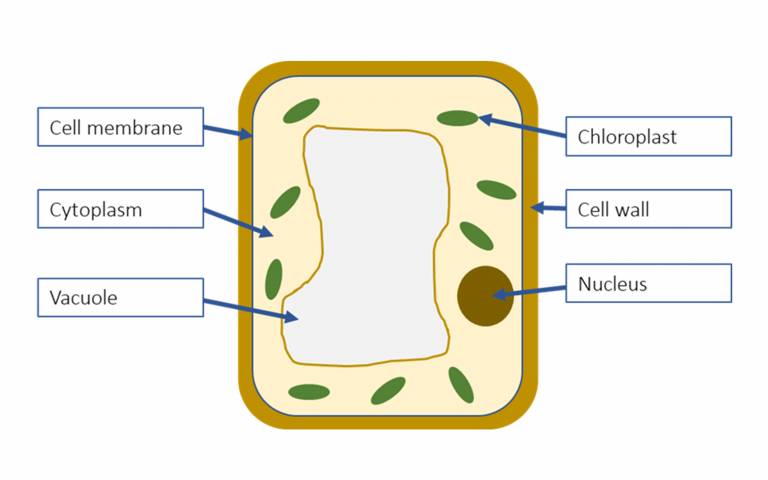What gives plants the ability to convert carbon dioxide into oxygen?
Thank you for your question!

29 March 2021
In a previous answer, we looked at how plants produce oxygen through the process of photosynthesis. Photosynthesis is the method through which plants make their food. They use sunlight, carbon dioxide and water to produce energy, in the form of glucose (a type of sugar) and oxygen is something that is left over from this process. Glucose is an important source of food for plants since most plants cannot get food from the environment. Although there are some really cool carnivorous (meat eating) plants out there, such as the Venus flytrap. Check out this video to see how this unusual plant gets its food.
But what is it exactly that makes plants able to carry out the process of photosynthesis for making food?
Well, within the cells of plants are tiny structures called chloroplasts (Figure 1). These chloroplasts contain a substance called chlorophyll. It is the chlorophyll within the chloroplasts that makes leaves green! Chlorophyll is an essential element for photosynthesis, without it, photosynthesis would not be possible!

Chlorophyll does the important job of absorbing the light needed in the reaction for photosynthesis (Equation 1). When we break this process down it can be described as 6 molecules of carbon dioxide and 6 molecules of water reacting together in the presence of light. This produces 1 molecule of glucose and 6 molecules of oxygen (Equation 2). So, you can see that the carbon dioxide along with the water is converted using light into glucose and oxygen. And this all takes place within the structures in the leaves!

Equation 1: Word equation for the process of photosynthesis

Equation 2: Symbol equation for the process of photosynthesis
During photosynthesis, chlorophyll in the chloroplasts absorbs light in the red and blue range and reflects the green light. This is why the leaves look green! The chlorophyll converts the energy from the light waves into chemical energy which can be used to make glucose.
There are a number of factors that will affect the rate of photosynthesis. Temperature, the concentration of carbon dioxide, and the intensity of the available light will all affect how fast or slow photosynthesis takes place. How do you think each of these variables will affect the rate of photosynthesis?
If you would like to read some more on this subject, you will find some more information here and here, or watch this short video.
 Close
Close


